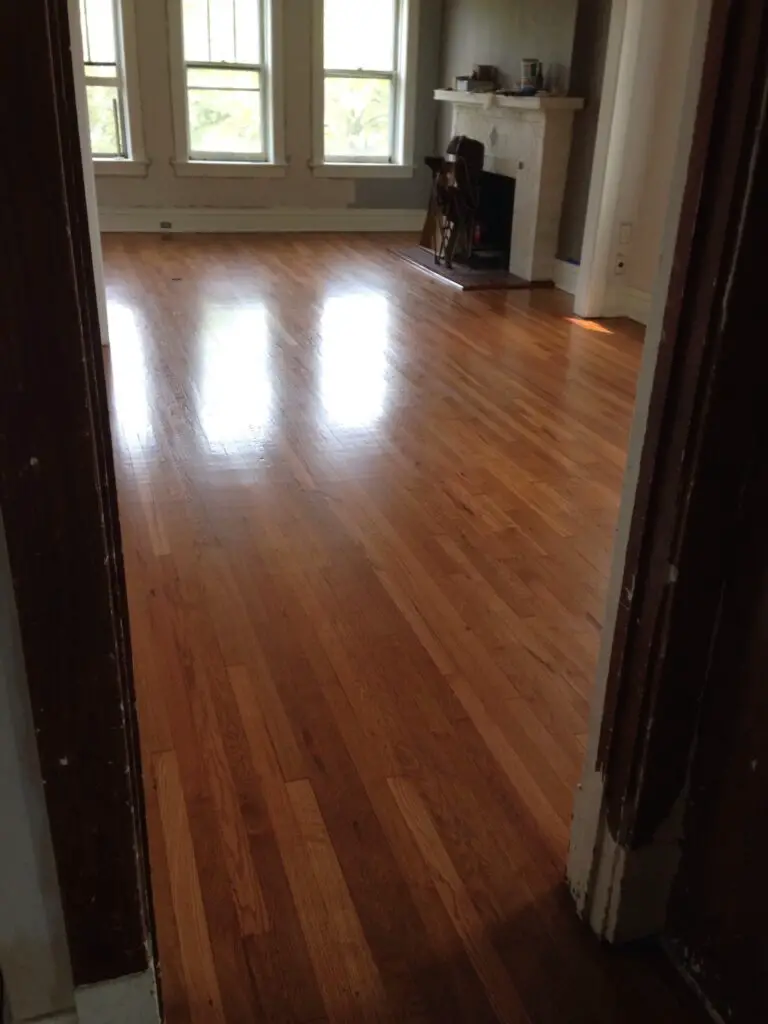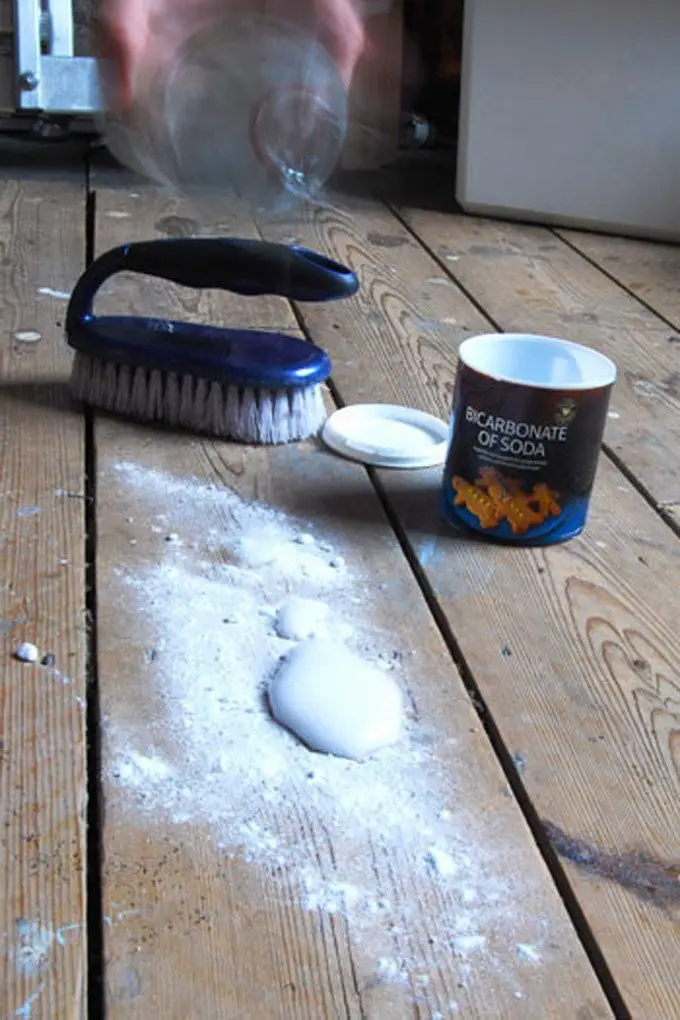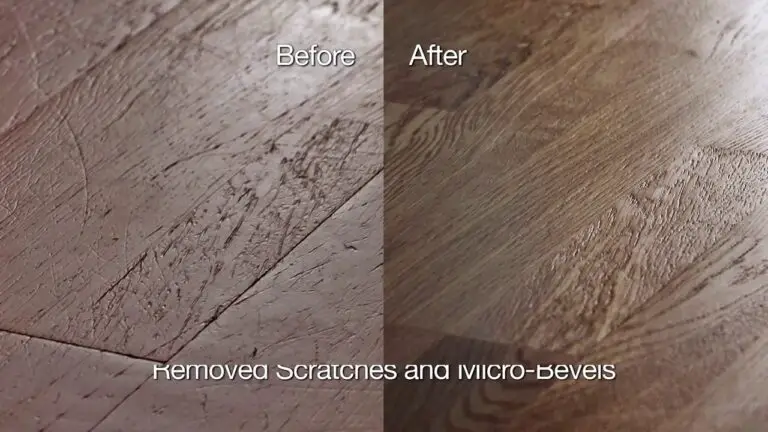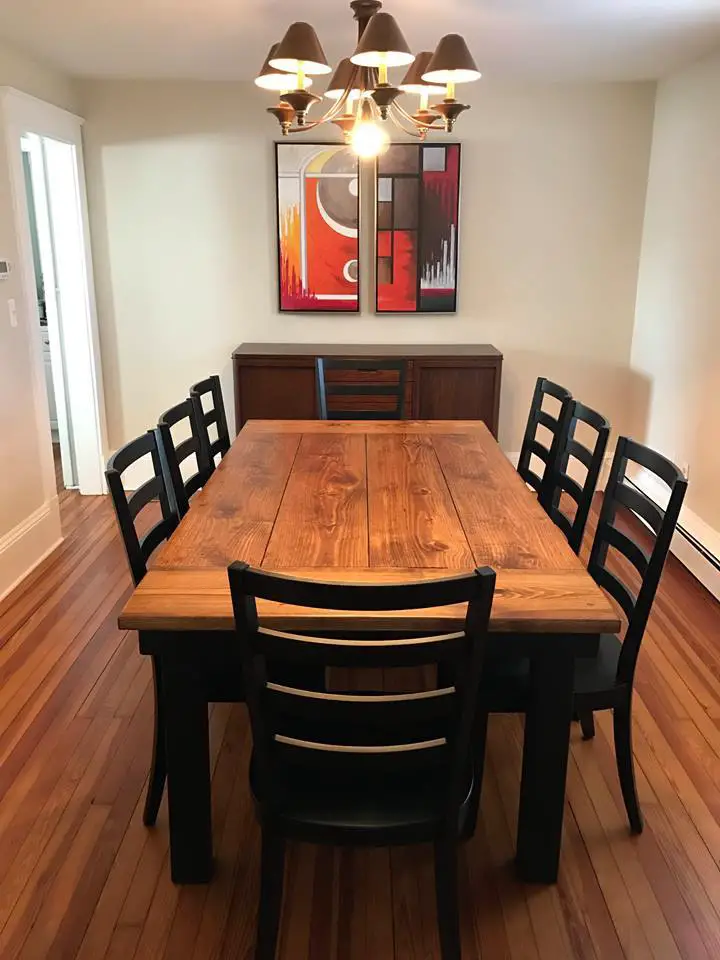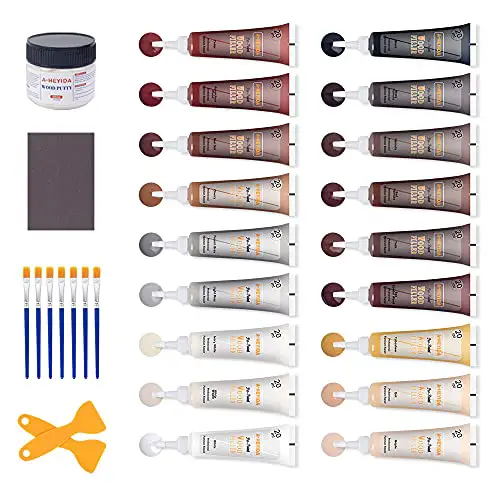How to Change Wood Floor Color
When it comes to wood floors, there are a few different ways that you can change the color. If you have an unfinished wood floor, then staining it is probably the best option. You can choose from a variety of different colors when you stain your floor, and the process is relatively simple.
If you have a finished wood floor, then painting or refinishing it is probably your best bet. Again, there are a variety of colors to choose from, and the process is fairly straightforward.
- Decide on the new color you want for your wood floors
- You may want to consult with a professional to get guidance on what will work best in your space
- Once you have chosen the new color, purchase the floor stain and other supplies needed for the project
- Prepare your floors for staining by sanding them down and removing any old finishes that may be present
- Apply the stain to your floors following the manufacturer’s instructions
- Be sure to protect any areas that you do not want stained with painters’ tape or drop cloths
- Allow the stain to dry completely before applying a topcoat of polyurethane or another desired finish
Change Hardwood Floor Color Without Sanding
If you’re looking to change the color of your hardwood floors without having to sand them down first, there are a few options available to you. Depending on the current finish of your floors and the desired look you’re going for, you can either stain or paint your hardwood floors.
Staining hardwood floors is a popular option because it allows you to change the color while still maintaining the natural wood grain appearance.
It’s important to note that stained floors will need to be resealed after every few years in order to protect them from wear and tear. When choosing a stain, make sure to test it out on a small section of your flooring first so that you can see how it looks before committing to it.
Painted hardwood floors are another option if you want something more durable or if you’re going for a completely different look.
However, painting over hardwood can be tricky because if not done correctly, the paint can start peeling off. It’s important to use a primer designed specifically for painting over wood and follow all instructions carefully in order to avoid any issues.
Read: How Do You Remove Sanding Dust from Hardwood Floors?
Change Hardwood Floor Color Cost
When it comes to hardwood floors, there are many different ways that you can change the color. You can either refinish the floors with a new stain or paint them with a new color. Both of these options will change the look of your floors, but they come at different costs.
Refinishing your hardwood floors will typically cost between $2 and $4 per square foot. This means that if you have a 10×10 room, it will cost you between $200 and $400 to refinish your floors. If you want to add a new stain to your floors, this will add an additional cost of $0.50-$1 per square foot.
So, if you have a 10×10 room, it will cost you an extra $100-$200 to add a new stain to your Floors
If you decide to paint your hardwood floors instead of refinishing them, the cost will be higher. Paint is more expensive than stain and it will take more time to apply.
On average, it will cost between $3 and $5 per square foot to paint your hardwood floors . So, if you have a 10×10 room , it could cost you as much as$500 just for the paint!
How to Stain Wood Floors Darker
When it comes to staining wood floors, there are a few different ways that you can go about it. If you want to achieve a darker stain, there are a few things that you will need to do. First of all, you will need to choose the right type of wood flooring.
Some types of wood are more porous than others and will absorb the stain more readily. You may also want to consider using a pre-stain conditioner on your floors before applying the actual stain. This will help to ensure even coverage and prevent any blotches or streaks from occurring.
Once you have chosen the right type of wood flooring and prepared it for staining, you will need to select your desired shade of dark stain. When it comes to choosing a dark stain, there are many different shades available so be sure to pick one that compliments your existing décor. Once you have decided on the perfect shade, it’s time to get started staining your floors!
To get started, apply the dark stain evenly across the surface of your wood floors using a brush or roller specifically designed for use with stains. Be sure to work in small sections so that the stain doesn’t have a chance to dry before you’ve had a chance to even it out. In general, two coats of dark stain should be plenty but if your floors are particularly light in color, you may want to consider adding an additional coat for good measure.
Just be sure not to overdo it – too much Stain can actually start To look unnatural And leave Your floors looking muddy instead Of rich Anddark .
If You carefully follow These simple steps , You should have no problem achieving The beautiful , Dark -stained wood Floors Of Your dreams !
Can You Change the Color of Engineered Wood Floors
If you’re considering changing the color of your engineered wood floors, there are a few things to keep in mind. First, engineered wood is made up of multiple layers of real wood veneer, so it can be sanded and refinished like solid hardwood. However, because it’s composed of thin layers, you’ll want to be careful not to sand too deeply and damage the underlying plywood.
Once you’ve sanded down to the desired level, you can then apply a new stain or finish in any color you like. Just keep in mind that dark colors may require more coats to achieve even coverage.
Read also: Engineered Wood Flooring
Floor Stain Colors
There are a lot of factors to consider when choosing a floor stain color. The most important factor is the overall look you are trying to achieve for your home. Do you want a dark, rich look or a light, airy feel?
There are also environmental factors to consider, like how much sunlight hits your floors and whether you have pets that might track in dirt. Here are some tips to help you choose the perfect floor stain color for your home:
1. Consider the overall aesthetic you want to achieve.
Floor stain colors can range from light blondes to deep chocolates. If you’re not sure what look you’re going for, start by browsing through design magazines or looking at paint chips at your local hardware store.
2. Take into account how much sunlight hits your floors throughout the day.
Sunlight can fade flooring over time, so if your rooms get a lot of natural light, it’s best to choose darker stains that won’t show wear as easily.
3. If you have pets, think about their fur color when choosing a stain color for your floors. You don’t want to end up with stained floors that clash with your pet’s coat!
Instead, opt for something in the middle of the spectrum so it will complement both light and dark fur colors equally well.
How Much Does It Cost to Change the Color of Hardwood Floors?
One of the most common questions we get asked by hardwood flooring owners is, “How much will it cost to change the color of my floors?” The short answer is that it depends on a few factors, including the type of wood, the current finish, and the desired finish. In this blog post, we’ll break down each factor so you can get a better idea of what to expect.
The first thing to consider is the type of wood. Some woods are more difficult to stain than others, and therefore may require more time and effort (and money) to achieve the desired color. For example, cherrywood is notoriously difficult to stain evenly, so if you’re looking for a deep stain on cherry floors, be prepared to pay a little extra.
The second factor is the current finish. If your floors have a glossy polyurethane finish, then they will need to be sanded down before they can be stained. This additional step will add to the overall cost.
However, if your floors have a natural oil or wax finish, they can usually be stained without any sanding required.
Finally, you need to consider the desired finish. If you want your floors stained in multiple colors or with a distressed look, then this will obviously take more time (and money) than simply staining them one solid color.
Also keep in mind that some finishes are more durable than others – if you plan on putting heavy traffic on your newly-stained floors (e.g., in a commercial space), then you may want to spend extra for a robust topcoat that will withstand wear and tear over time.
In general, expect to pay anywhere from $500-$2000 (or more) to change the color of your hardwood floors – again, this all depends on factors like wood type/quality, current finish condition/type ,and desired final result . But whatever your budget may be , know that there are options available at every price point that can give your home or business beautiful new hardwood floors!
Read to know: What Colors Go With Light Hardwood Floors?
Can You Change the Color of Hardwood Floors Without Sanding?
Yes, you can change the color of your hardwood floors without sanding them first. There are a few different ways to do this, depending on the look you’re going for and the condition of your floors.
If you want to simply darken your floors, you can use a stain.
This is a quick and easy way to change the color, and it can be done in just a few hours. If you want to lighten your floors or change the hue entirely, then painting them is likely your best bet. You’ll need to use a primer first, and then follow up with two coats of paint.
This will take longer than staining, but it will give you a completely new look.
Keep in mind that neither of these methods will work if your floors are damaged or have major scratches or gouges. In that case, sanding is necessary to create a smooth surface for either stain or paint to adhere to.
Can You Change the Color of Hardwood Floors to Grey?
If you’re considering changing the color of your hardwood floors, grey is definitely a popular option. But can you actually change the color of hardwood floors to grey?
The short answer is yes, but it’s not as simple as just painting or staining them.
Hardwood floors are made of natural wood, which means they can be stained or dyed to achieve the desired color. However, keep in mind that this is a permanent change, so be sure you’re absolutely certain before proceeding.
There are a few things to consider when changing the color of hardwood floors to grey.
First, what type of finish does your floor currently have? If it’s a dark stain, you may want to lighten it first with bleach or sanding before applying a new coat of paint or stain. Otherwise, the new color may not take evenly.
Another thing to consider is how dark or light you want your grey floors to be. A darker shade will give the room more drama while a lighter shade will create a more airy and open feel. Once you’ve decided on the perfect shade, all that’s left is to get started!
Important: Best Color Rug For Dark Wood Floors
How Do You Transition the Color of Hardwood Floors?
There are a few options when it comes to transitioning the color of your hardwood floors. You can either stain them a new color, paint them, or install new flooring altogether.
Staining your hardwood floors is the most popular option because it is less expensive and time-consuming than the other two choices.
When staining your floors, you will first need to sand them down to remove any existing finishes. Once the floors are sanded, you can then apply a stain of your choice. Be sure to test the stain on a small area before applying it to the entire floor so that you can see how it will look once it dries.
Painting your hardwood floors is another option, but keep in mind that this will require more prep work than staining. You will need to sand and prime the floors before painting them. It is also important to use a paint that is specifically designed for hardwood floors so that it will not damage the wood.
If you want to completely change the color of your hardwood floors, installing new flooring may be your best bet. This option will obviously be more expensive than staining or painting, but it will give you much more flexibility in terms of choosing a new color or style of flooring. Keep in mind that you will need to hire a professional installer if you go this route.
Conclusion
Are you interested in changing the color of your wood floors but don’t know how? Well, you’re in luck! This blog post will show you how to change wood floor color without having to replace the entire floor.
First, start by sanding down the surface of the floor. This will help create a smooth surface for the new paint or stain to adhere to. Once you’ve sanded the floor, vacuum up any dust and then wipe down the surface with a damp cloth.
Next, choose the type of paint or stain you want to use. If you’re going with paint, be sure to select a high-quality product that is designed specifically for floors. For stains, there are many different colors available so take some time to decide which one would best suit your space.
Once you have all of your materials ready, it’s time to start painting or staining! Be sure to follow the directions on the product label carefully and always test it out on a small area first before doing the entire floor. Afterward, let the floor dry completely before walking on it or moving furniture back into place.

